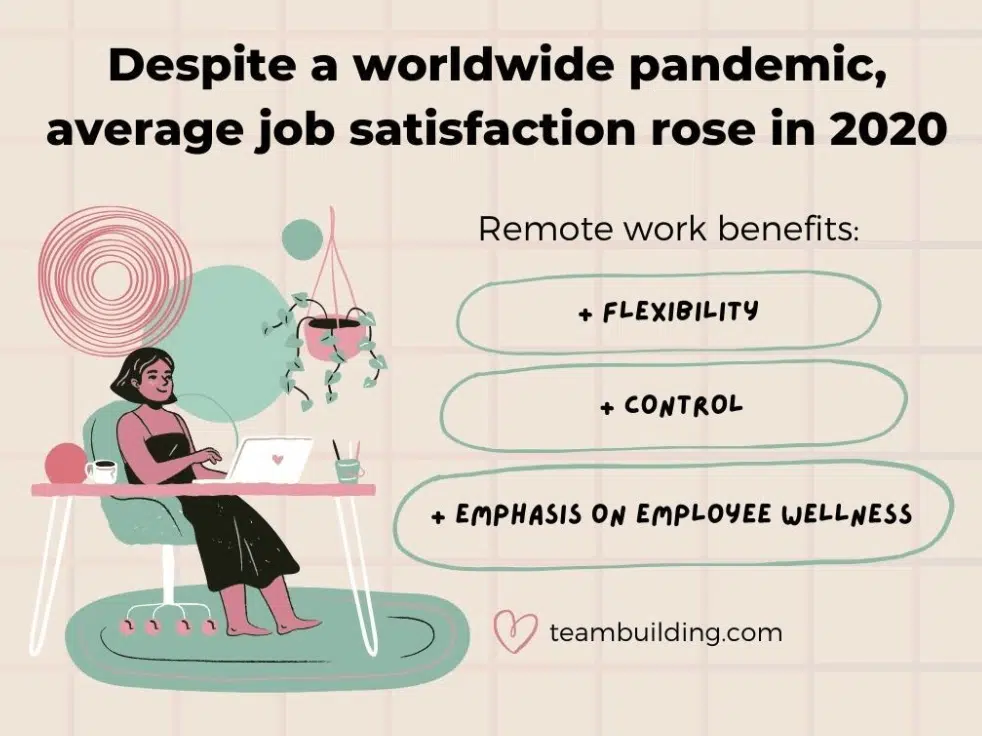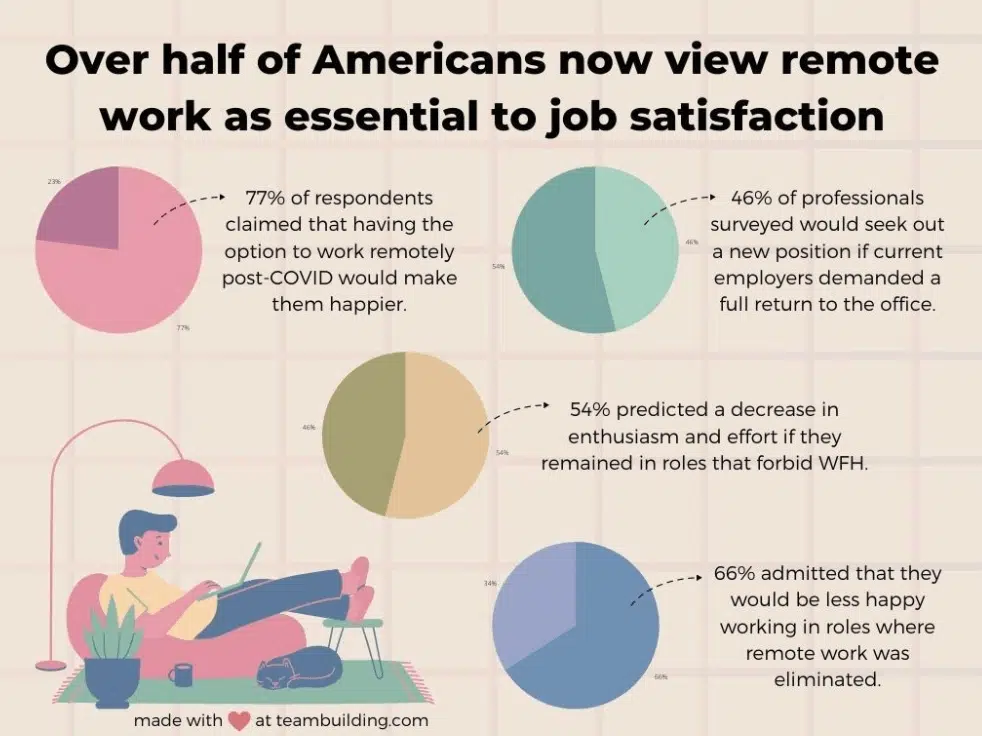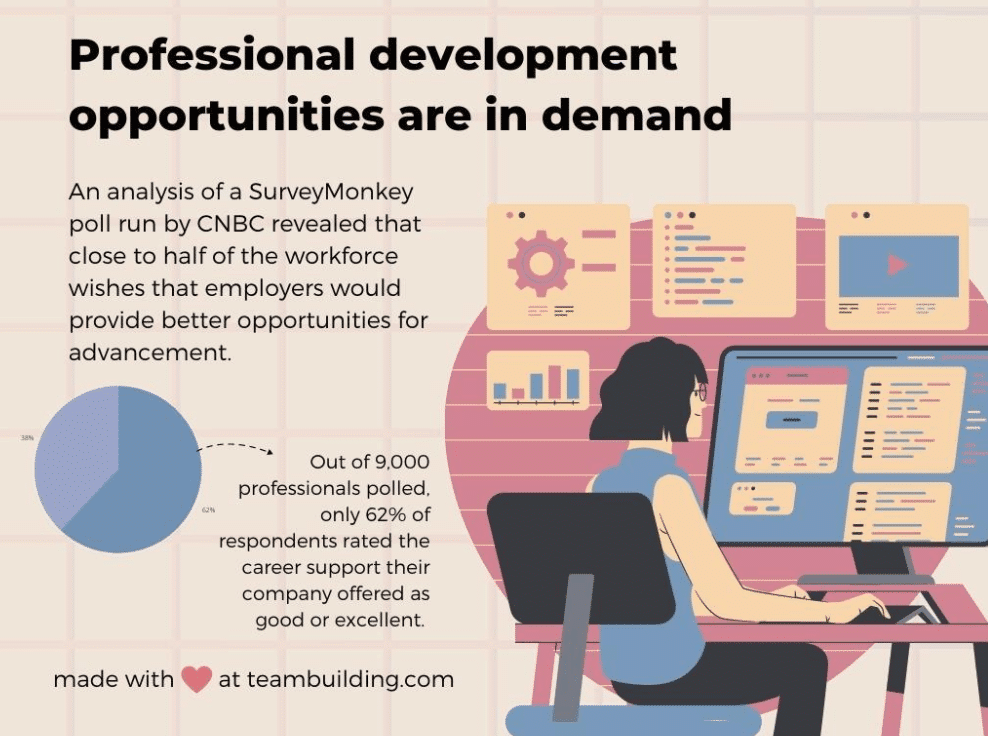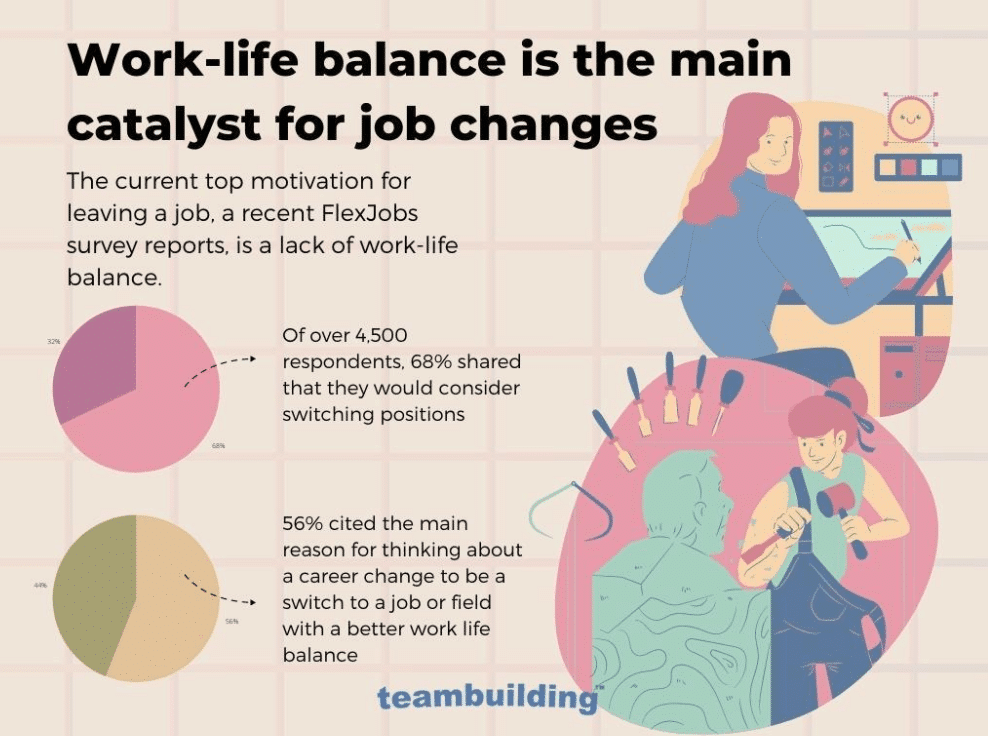You found our list of useful job satisfaction statistics and facts for leaders, content creators, and HR professionals.
Job satisfaction statistics are figures that measure career fulfillment and employee engagement in the workplace. These reports come from surveys, studies, and the collection of widespread professional sentiment. Understanding these realities is important because the feedback can help leaders design more progressive and effective work environments.
This information can help organizations design better employee engagement practices as well as reduce employee turnover and better manage attrition. The data often correlates with employee turnover statistics and quiet quitting statistics.
We will continue to keep these statistics on job satisfaction and engagement updated as a useful resource for you and your audience.
Job satisfaction statistics [free to cite]
You can use this data in any content, including blog articles, social media, formal presentations, and internal communications.
Please cite the source as TeamBuilding and link to https://teambuilding.com/blog/job-satisfaction-statistics.
1. Despite a worldwide pandemic, average job satisfaction rose in 2020
After hitting a historic low in 2010, job satisfaction has continued to steadily rise over the past decade. When a global pandemic hit in early 2020 and ushered in shutdowns, major workplace shifts, and economic uncertainty, experts would not have been surprised to see a reversal of the trend. However, despite the difficulties, a study from The Conference Board showed that average worker satisfaction continued on an upswing.
One possible explanation of this result is that many workers enjoyed the flexibility and control that remote work provided. Another contributing factor is that companies placed a greater emphasis on employee wellness and took steps to mindfully cultivate worker happiness and connectedness.
Experts predict that job satisfaction will continue to rise in coming years.

2. Over half of Americans now view remote work as essential to job satisfaction
Owl Lab’s 2020 State of Remote Work Report revealed that work from home has become a requirement for work happiness for a significant portion of the workforce.
The survey uncovered the following tidbits:
- 77% of respondents claimed that having the option to work remotely post-COVID would make them happier.
- 46% of professionals surveyed would seek out a new position if current employers demanded a full return to the office.
- 54% predicted a decrease in enthusiasm and effort if they remained in roles that forbid WFH.
- 66% admitted that they would be less happy working in roles where remote work was eliminated.
Employers would be wise to take notes of this survey, and keep in mind that refusing to consider hybrid or remote options may result in losing talent.

Get our free team building toolbox
- icebreaker games
- bingo cards
- DIY guides
 by teams at FedEx, Amazon, Deloitte and 73,930+ others
by teams at FedEx, Amazon, Deloitte and 73,930+ others

3. Professional development opportunities are in demand
An analysis of a SurveyMonkey poll run by CNBC revealed that close to half of the workforce wishes that employers would provide better opportunities for advancement. Of 9,000 professionals polled, only 62% of respondents rated the career support their company offered as good or excellent.
Professional development is an important condition for many modern workers, younger generations like millennials especially.

4. Work-life balance is the main catalyst for job changes
The current top motivation for leaving a job, a recent FlexJobs survey reports, is a lack of work-life balance. Of over 4,500 respondents, 68% shared that they would consider switching positions, and 56% cited the main reason for thinking about a career change to be a switch to a job or field with a better work life balance.
Comparatively, salary increase came in at 50%, desire for a more meaningful career at 49%, and professional growth at 43%.

Learn more about work-life balance and remote work-life balance.
5. Job satisfaction and company environment are the main reasons top employees stay in jobs
According to a study published in the Harvard Business Review, work atmosphere and a sense of meaning are the two largest contributors of employee retention. Authors Vincent S. Flowers and Charles L. Hughes explain that while outside factors such as job availability may influence an employee’s decision to leave a company, culture and personal and professional fulfillment can lessen these forces and convince team members to remain in current roles.
The study lists components of job satisfaction as achievement, recognition, responsibility, growth, and motivation, and defines work environment as including rules, facilities, and compensation and benefits. This experiment showed that while external factors tended to determine lower-skilled workers’ job choices, managers and skilled professionals were more impacted by internal factors. Of the top ten reasons these higher professions gave for remaining in jobs, six related to job satisfaction, and three to environment.
6. India leads the world in workplace satisfaction, while Japan takes last place
According to the 2019 Randstad Workmonitor study, the three countries where work satisfaction was highest were India, Mexico, and Turkey. The three lowest were Singapore, Hong Kong, and Japan. India clocked in at an astounding 89%, while Japan’s score was 42%. The US reported a 78% rate of job satisfaction, and shared the fifth place rank on the list with Denmark.
7. Programmers and priests are among the most satisfied professions in 2021
Nailing down the most satisfying jobs can be tricky, since each study relies on different metrics and methodologies.
Based on a combination of pay, meaning, and satisfaction, Clergy topped the list of a PayScale survey of over 450 responding roles. Runners up included postsecondary ESL and literature teachers and surgeons.
Meanwhile, analyzing qualities like job satisfaction, job openings, and median base salary, the Glassdoor 50 Best Jobs in America for 2021 report found that the top three jobs were Java Developer, Data Scientist, and Product Manager.
Across multiple surveys, there seems to be a correlation between salary, job importance, and fulfillment. The most content workers are professionals with livable wages who contribute meaningfully to society. Meanwhile, roles that are less obviously impactful and underpaid, for instance parking lot attendants, self-identify as the least gratifying professions.
8. Trust and respect are two of the most critical components of job satisfaction
The top contributor to job satisfaction, according to a SHRM survey, is respectful treatment of employees at all levels. Discrimination and harassment harm more than the direct victims of these practices. Workers want to participate in fair and equitable environments that treat teammates from across different backgrounds, skill levels, and status with dignity and consideration. Though 65% of respondents agreed with this idea, only 38% were satisfied with this condition at their current workplace.
Trust is also an important factor of job satisfaction, particularly the trust of higher management. In the same SHRM study, 61% ranked the ability to trust leadership and an openness among managers to be essential to job satisfaction, however only 33% of organizations met these expectations.
Here is a list of trust building activities to increase psychological safety at work.

9. Social issues are increasingly an element in the job satisfaction equation
The Boston Consulting Group’s 2021 Decoding Global Ways of Working analysis found that social responsibility plays an important role in professional happiness. Of over 200k survey respondents, over half would reportedly decline working for an employer whose values and practices conflicted with the candidate’s core beliefs. Around 7 in 10 agreed that climate and diversity had become more pressing issues in the past year.
Trends show that social responsibility is becoming a growing demand in the workforce. To feel good about their jobs, employees need not only feel personally taken care of, but increasingly must have a sense that the employer is not actively harming society.
How to cite these job satisfaction statistics
If you use data or statistics from this resource or reshape the infographic, please include a link to https://teambuilding.com/blog/job-satisfaction-statistics.
We will continue updating this resource with useful job satisfaction statistics and facts for your work.
Final Thoughts
Understanding the data surrounding job satisfaction is important, because these facts and figures help employers get a sense for workers’ needs and priorities. Studying the numbers can help organizations retain talent, maintain a competitive edge, and build a better environment for employees.
The conditions for job satisfaction shift with time and societal changes, and it is important for companies to regularly workforce happiness and adjust culture and benefits accordingly.
For more useful facts and figures, check out this list of team building statistics and these remote work stats, or our study on trends in the workplace.
We also have a list of the best employee engagement statistics, a list of ways to improve employee job satisfaction and a post on the benefits of happy employees.




